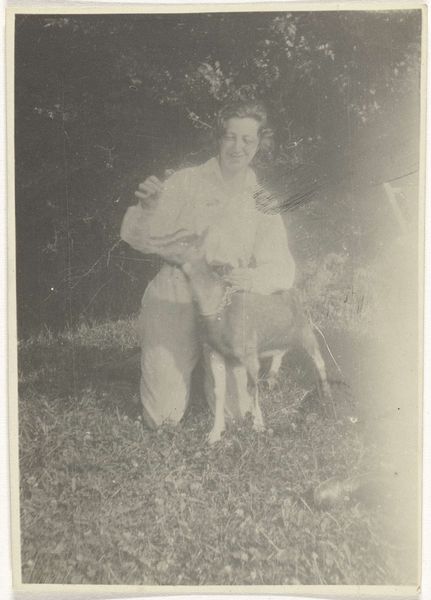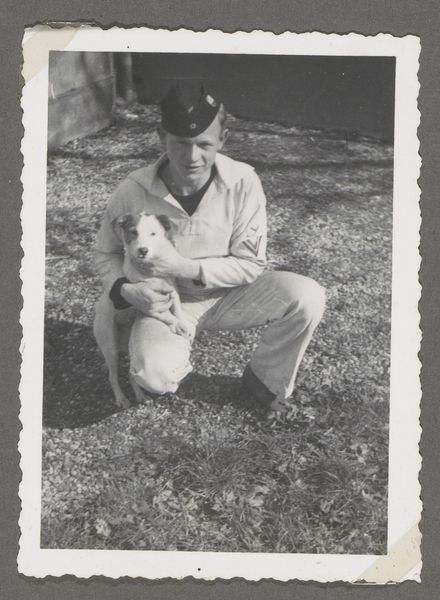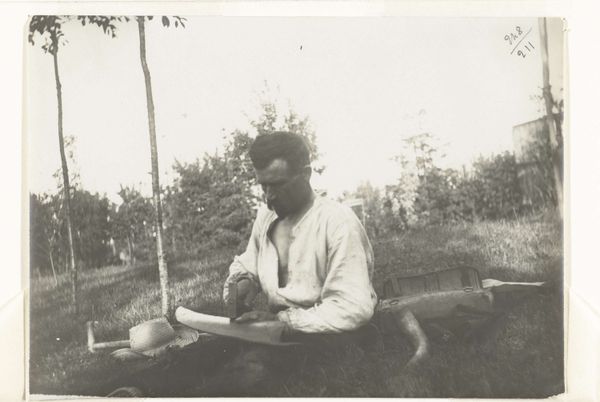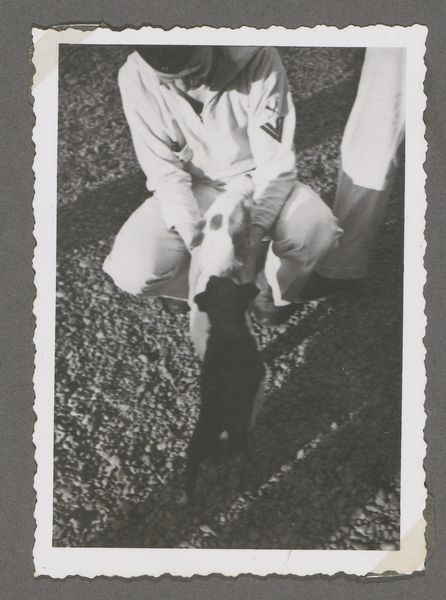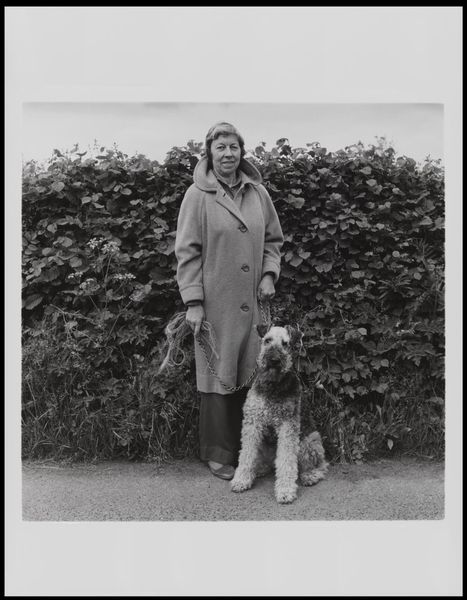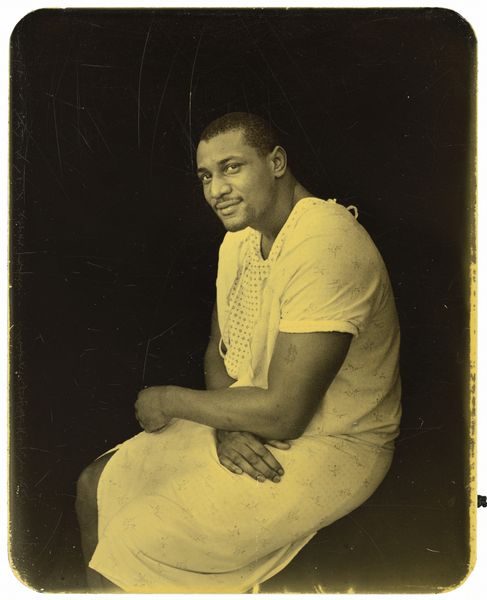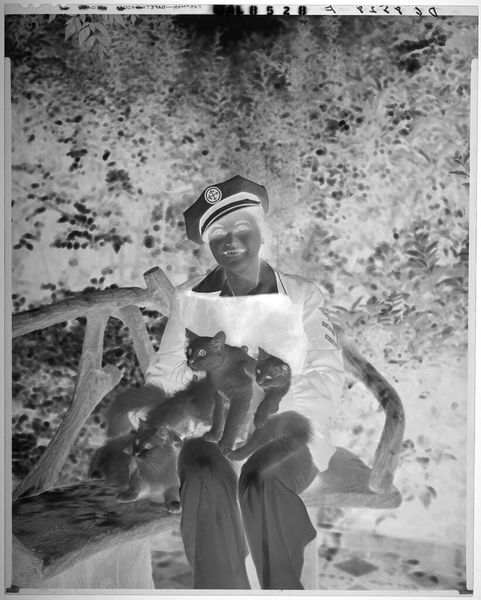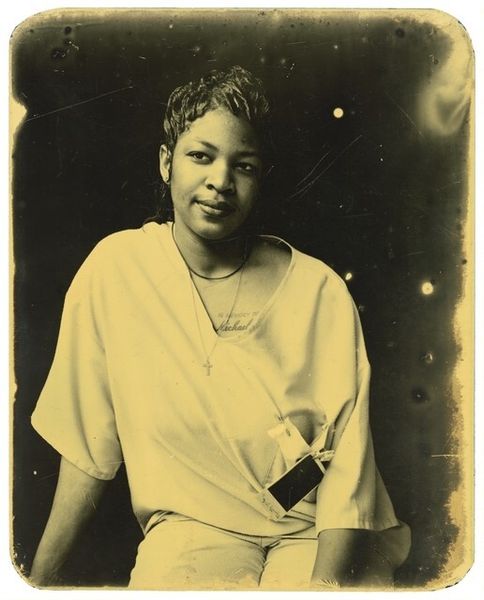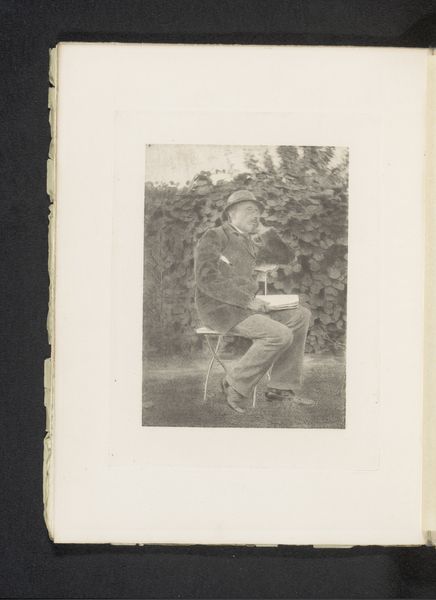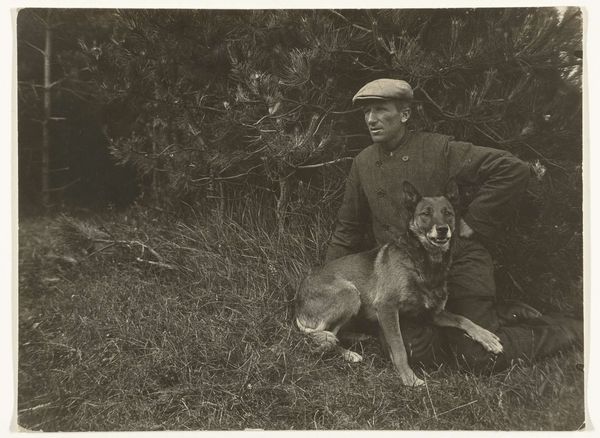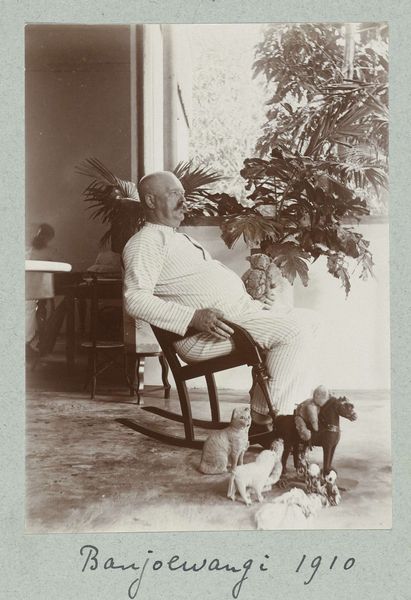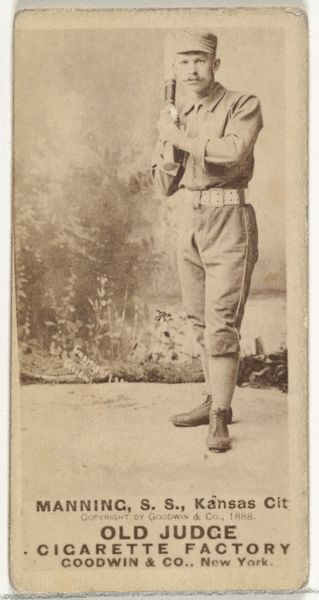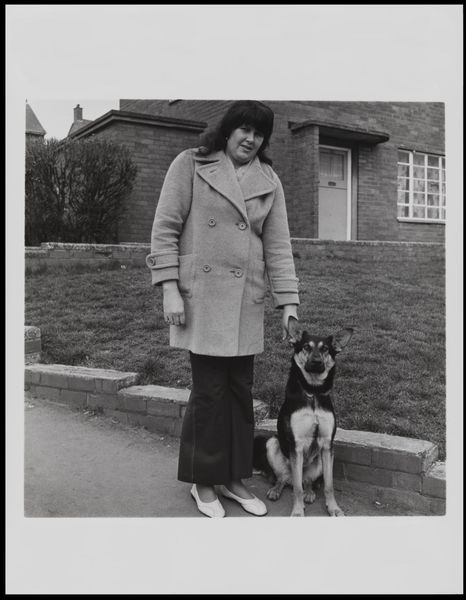
photography, gelatin-silver-print
#
portrait
#
print photography
#
landscape
#
outdoor photograph
#
outdoor photo
#
photography
#
gelatin-silver-print
#
portrait photography
#
realism
Dimensions: image/plate: 12.7 × 10.1 cm (5 × 4 in.)
Copyright: National Gallery of Art: CC0 1.0
Curator: Here we have Deborah Luster's gelatin-silver print, "Angola, Louisiana," from 1999. A captivating image of a man and his dog in a landscape setting. What's your immediate take? Editor: Striking, isn't it? A sort of sepia dreamscape. The dog's sheer size contrasts so dramatically with the quiet sadness I see in the man's face. Almost feels biblical in scale, you know, man and beast facing something together. Curator: Interesting interpretation. From a formal perspective, the limited tonal range really unifies the composition. Notice how the artist uses the background trees, framing the subjects to draw your eye in. Editor: Oh, for sure! It's beautifully balanced, but I keep circling back to the emotional weight. The dog looks noble, a protector maybe. The landscape behind them seems stark, unforgiving. Like they're alone out there, these two figures bound together by, what… companionship? Curator: Precisely! One could analyze the repetition of vertical lines - the trees echoing the figures. It creates a rigid, structured space that contains the subject. And notice the subtle light on the man's face and his dog's body. The technique draws attention to the subjects, lending both subjects significance in terms of space and representation. Editor: Okay, I'm feeling that—totally see your points. But think of the dog's eyes—they're not sentimental but almost weary. And "Angola, Louisiana" suggests the notorious prison. This isn't just some sweet pastoral scene. This is heavy, laced with something real and raw. Curator: Well, considering Luster's larger body of work—often focused on overlooked populations, she brings a human dimension to communities otherwise out of our field of vision. Her subjects' strength and resilience in adverse circumstances really makes you want to examine the history more closely, does it not? Editor: Definitely. You see the dog and man are family or partners, survivors… Curator: Yes. The artist captured something so poignant and dignified, I think we owe it to them to truly look. Editor: To truly look—and to feel too. Deborah Luster's captured something lasting and moving, hasn't she?
Comments
No comments
Be the first to comment and join the conversation on the ultimate creative platform.
